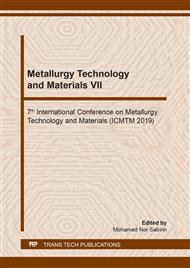p.128
p.135
p.141
p.149
p.155
p.161
p.167
p.175
p.181
Investigation of the Tensile Fracture Behavior of Notched C/SiC Composite Using In Situ SEM and Micro-CT
Abstract:
In order to better understand the failure mechanism of C/SiC composites, the tensile behavior of notched C/SiC composites was investigated by the in-situ scanning electron microscopy (SEM) and the micro-CT technique. Surface morphologies of the C/SiC sample during tensile loading were in-situ observed by SEM, while the three-dimensional microscopic images of the C/SiC sample before loading and after failure were obtained by micro-CT. The results showed that no cracks formed in the initial elastic stage corresponding to the linear part of the load-displacement curve. However, corresponding to the following non-linear part of the load-displacement curve, matrix crack initiation, fiber pull-out, crack propagation and deflection appeared consecutively in the notched region of the sample. What’s more, different crack growth paths existed in different directions of the sample during tensile failure. In general, approximately flat fracture formed in the plying direction and serrated or stepped fracture were observed in the needling direction. It indicated that the in-situ observation method combining SEM and micro-CT can obtain the micro-structure images of the material in different states, which is helpful to analyze the fracture failure mechanism of composites.
Info:
Periodical:
Pages:
155-160
Citation:
Online since:
October 2019
Authors:
Keywords:
Price:
Сopyright:
© 2019 Trans Tech Publications Ltd. All Rights Reserved
Share:
Citation:


